Repair help
My Washer Making Loud Noise: Here's Why and How to Fix
AZparts Team
Updated on July 17, 2025
8 min read
A washer that makes loud noise can be both annoying and concerning. Whether it's grinding, banging, or rattling sounds, these noises often signal underlying issues that need immediate attention. Understanding different noise types helps you address problems quickly and avoid costly repairs. At AZParts, we provide quality replacement parts and expert guidance to resolve your washing machine noise issues effectively.

1. Common Washing Machine Noises
Understanding the specific sounds your washing machine makes can help you identify potential issues before they become costly repairs. Here are the most common and concerning noise homeowners encounter:
1.1. Vibration or Banging
Vibration or banging noises are the most common washing machine complaints. These sounds typically occur when the washer drum is unbalanced, causing violent shaking during operation. The primary cause is usually uneven clothes distribution inside the drum, particularly when washing heavy items like comforters or multiple pairs of jeans together.
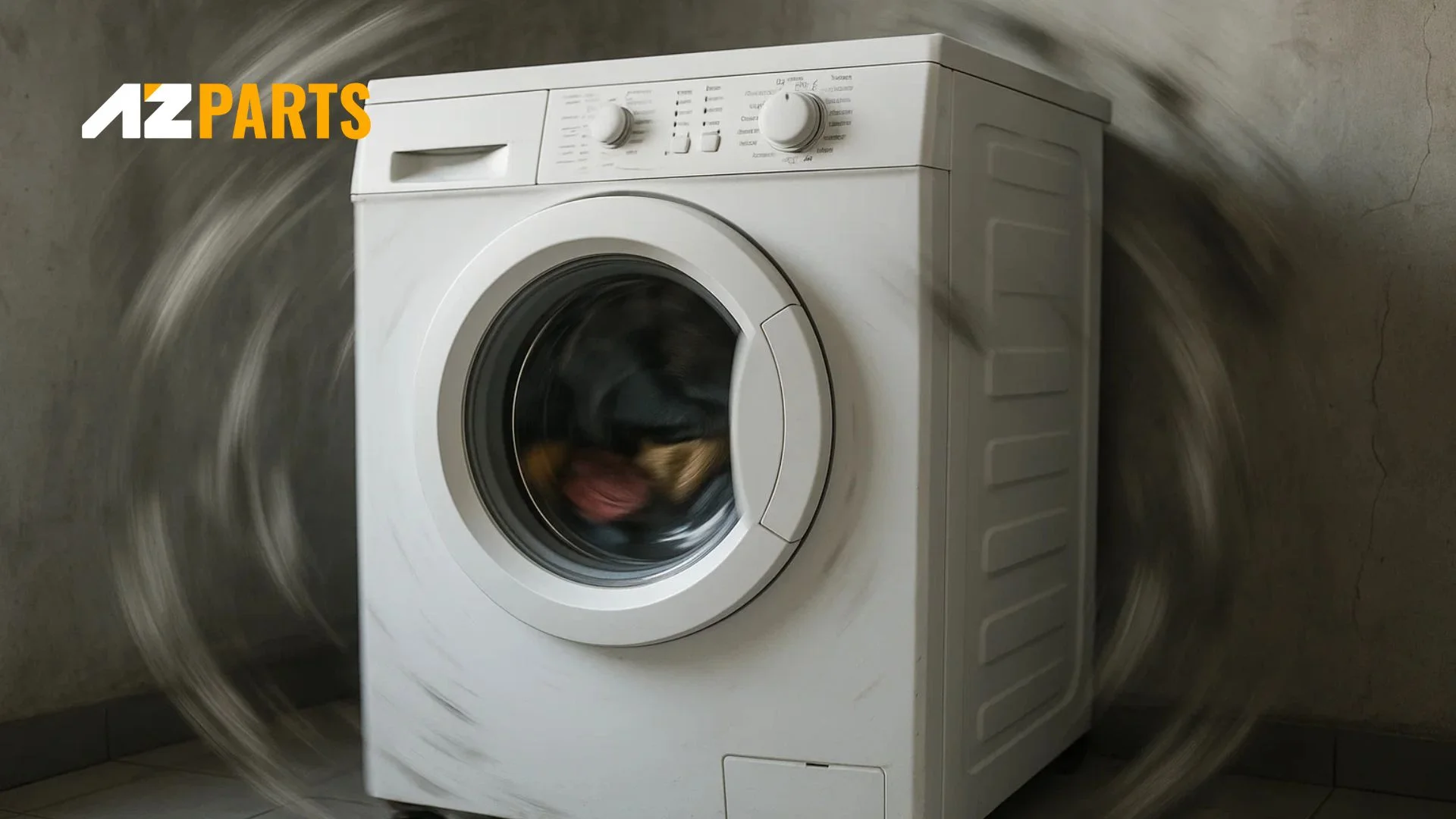
Violent shaking during operation (Source: AZParts)
Another common cause is improper machine leveling. If your washer sits on an uneven surface or the adjustable feet aren't properly set, the machine will rock during spin cycles, creating loud banging noises. Worn shock absorbers can also fail to control drum movement, resulting in excessive vibration that transmits through the machine's frame.
1.2. Clicking
Clicking sounds often indicate problems with the motor, drive belt, or transmission components. These noises typically occur during transitions between wash and spin cycles when the motor engages different mechanical systems. A worn drive belt can create clicking sounds as it slips over pulleys, while a faulty motor coupling produces similar noises when failing to connect the motor to transmission.
Foreign objects stuck in the drum or pump can also create clicking noises as they move during wash cycles. Additionally, clicking sounds may come from the water inlet valve as it opens and closes, though excessive clicking indicates the valve may be failing.
1.3. Grinding
Grinding noises are the most concerning sounds a washing machine can make, typically indicating serious mechanical problems. These harsh, metallic sounds occur when metal components rub against each other due to wear or misalignment. The most common cause is worn drum bearings, which support the wash basket and allow smooth rotation.
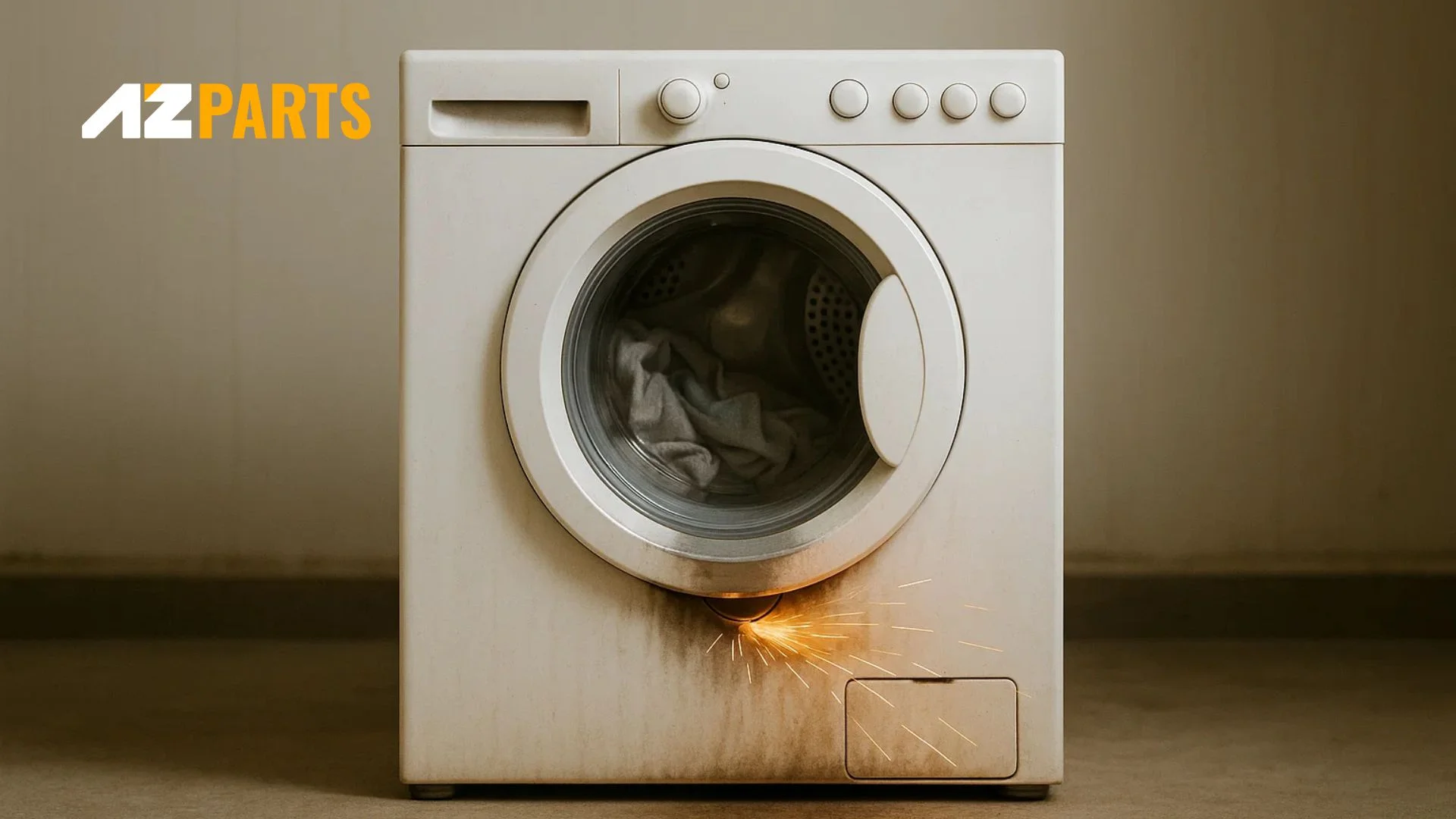
Grinding noises are the most concerning sounds a washing machine (Source: AZParts)
When drum bearings fail, they can't properly support the drum's weight, causing metal-on-metal contact that produces grinding sounds. This issue is particularly noticeable during spin cycles when the drum rotates at high speeds. If left unaddressed, failed bearings can cause severe damage to internal components.
1.4. Squealing
Squealing noises are typically caused by worn or misaligned belts, though they can also indicate bearing problems. Drive belts that become loose, cracked, or glazed over time slip on pulleys, creating high-pitched squealing sounds. This is especially common in older washing machines using traditional V-belts.
Motor bearings lacking proper lubrication can also produce squealing sounds, particularly during startup or high-speed operation. Pump impeller problems can cause squealing if debris becomes lodged in the pump housing or if the impeller becomes damaged.
1.5. Metal Clanking
Metal clanking noises often indicate loose or damaged internal components. These sounds occur when metal parts move freely within the machine's housing, creating impacts that produce clanking noises. Common causes include loose bolts, damaged mounting brackets, or worn suspension components.
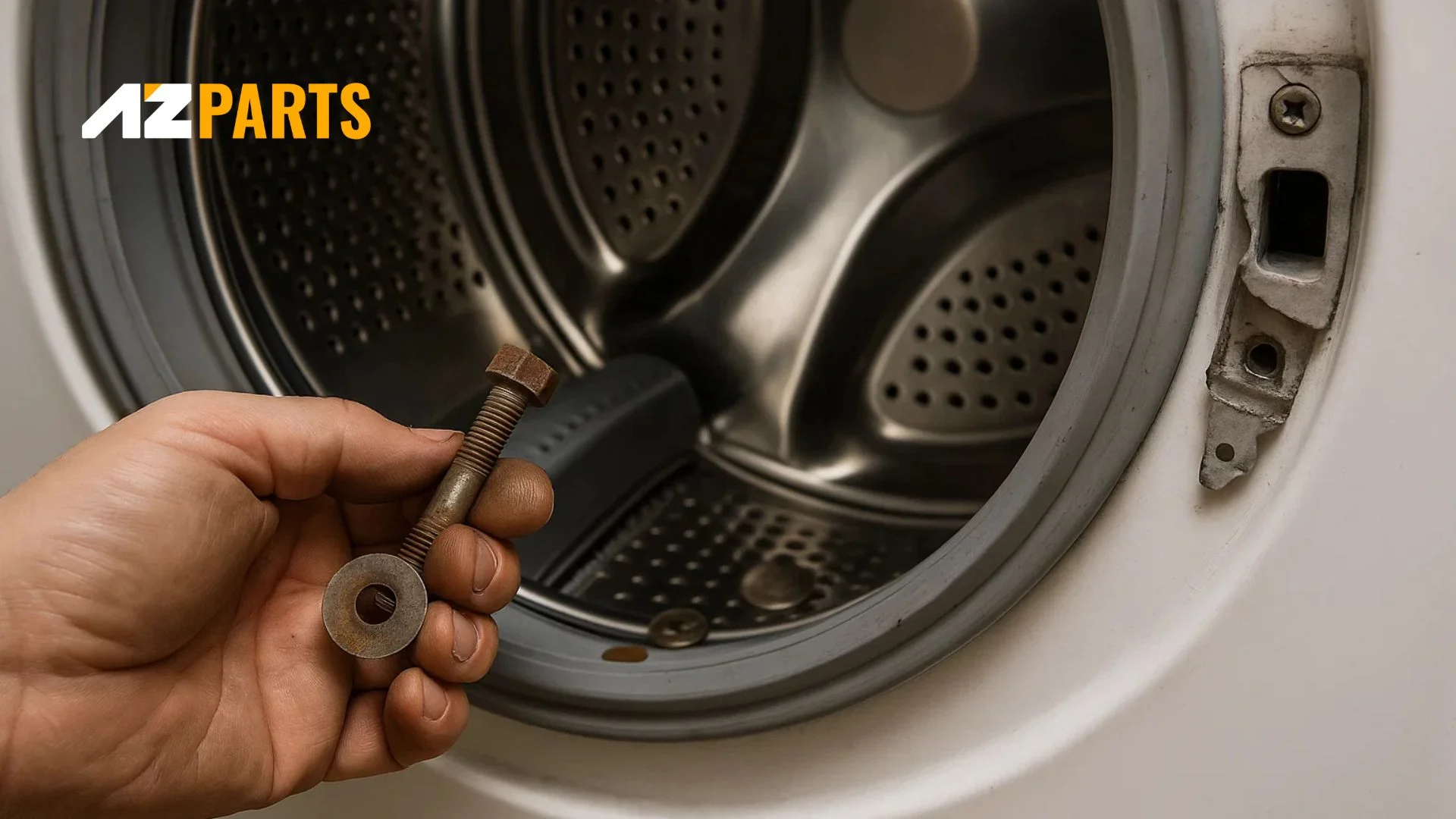
Metal clanking noises often indicate damaged internal components (Source: AZParts)
Foreign objects like coins, buttons, or small metal items can also create clanking noises as they move inside the drum or become trapped in pump areas. Worn agitator components in top-loading washers can also produce clanking sounds when mounting hardware becomes loose.
1.6. Noise During Agitation
Noises during agitation often indicate problems with the agitator assembly, motor, or transmission. In top-loading washers, worn agitator dogs can cause grinding or clicking noises when they fail. Transmission problems may produce grinding or clicking sounds specifically when the agitator operates.
Motor problems can also create noises during agitation, especially if the motor struggles to provide adequate power. This can result in humming, grinding, or clicking sounds that may worsen over time and eventually lead to complete motor failure.
1.7. Noise During Spin Cycle
Spin cycle noises often indicate problems with the drum, bearings, or suspension system. During this phase, the drum rotates at high speeds, placing significant stress on internal components. Worn drum bearings create grinding or rumbling sounds that intensify as drum speed increases.
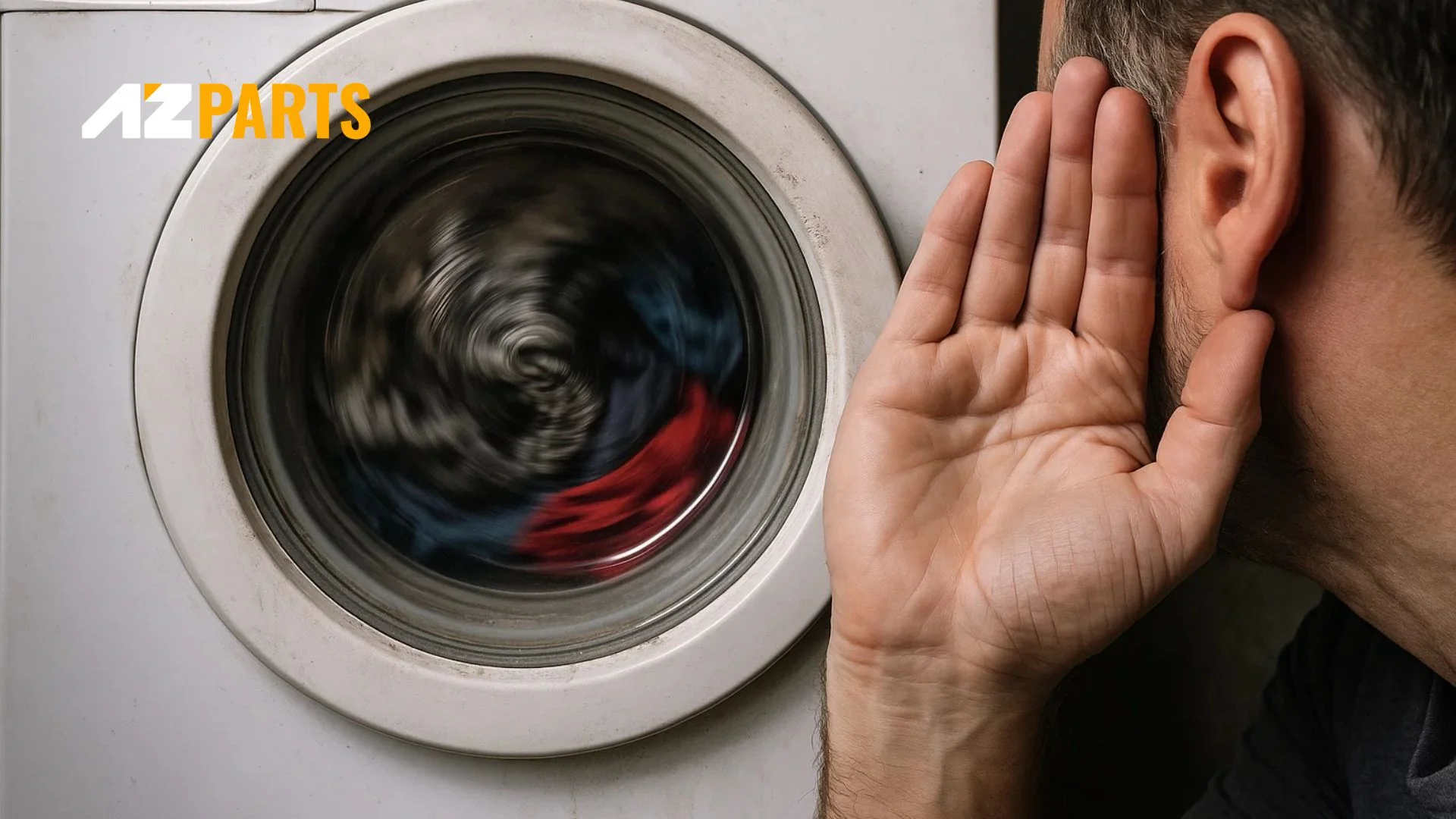
Unbalanced loads can cause excessive noise during spin cycles (Source: AZParts)
Unbalanced loads can cause excessive noise during spin cycles, as the drum struggles to maintain proper rotation with uneven weight distribution. Suspension system problems can also contribute to spin cycle noise when shock absorbers or springs become worn or damaged.
2. How to Fix A Washing Machine Making Loud Noise?
Fixing a noisy washing machine requires a systematic approach to identify the root cause of the problem. Begin by emptying the drum of all clothes, water, and any debris that may be causing the noise.
2.1. Empty the Drum
The first step in addressing noise issues is completely emptying the drum and inspecting it for foreign objects or damage. Remove all items and manually rotate the drum to check for smooth operation. Look for visible damage like cracks, dents, or rough spots that could indicate internal problems.
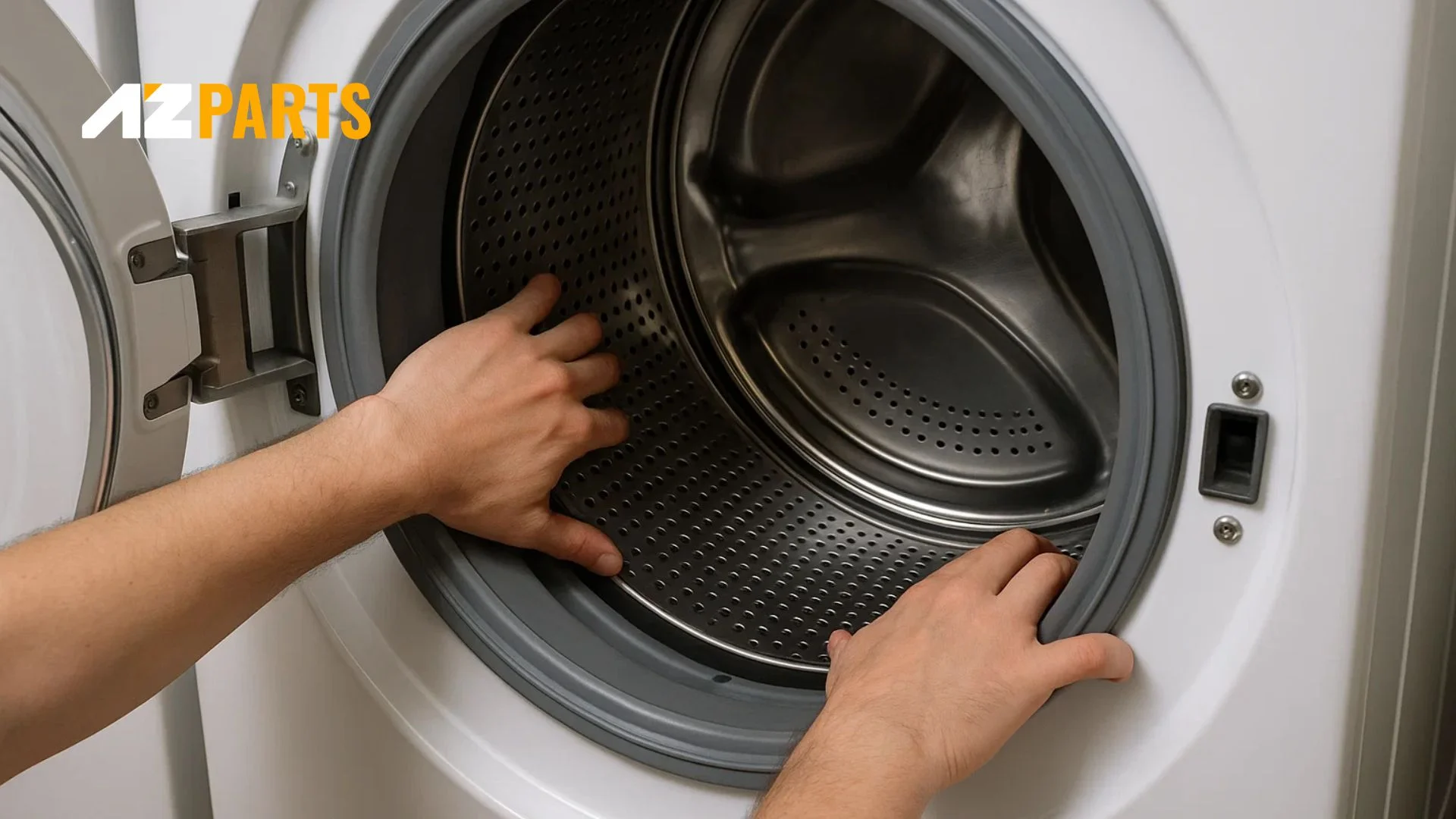
Remove all items and manually rotate the drum to check for smooth operation (Source: AZParts)
Check the drum's balance by gently pushing it from side to side. A properly functioning drum should move smoothly without excessive play or grinding sounds. Inspect the drum's exterior for loose or damaged components, including the door seal or agitator.
2.2. Clean the Lint Trap
Regular lint trap cleaning is essential for maintaining quiet operation and preventing noise-related problems. Lint and debris can accumulate over time, restricting water flow and causing the pump to work harder, resulting in increased noise levels. Remove and thoroughly clean the lint trap with warm water and a soft brush.
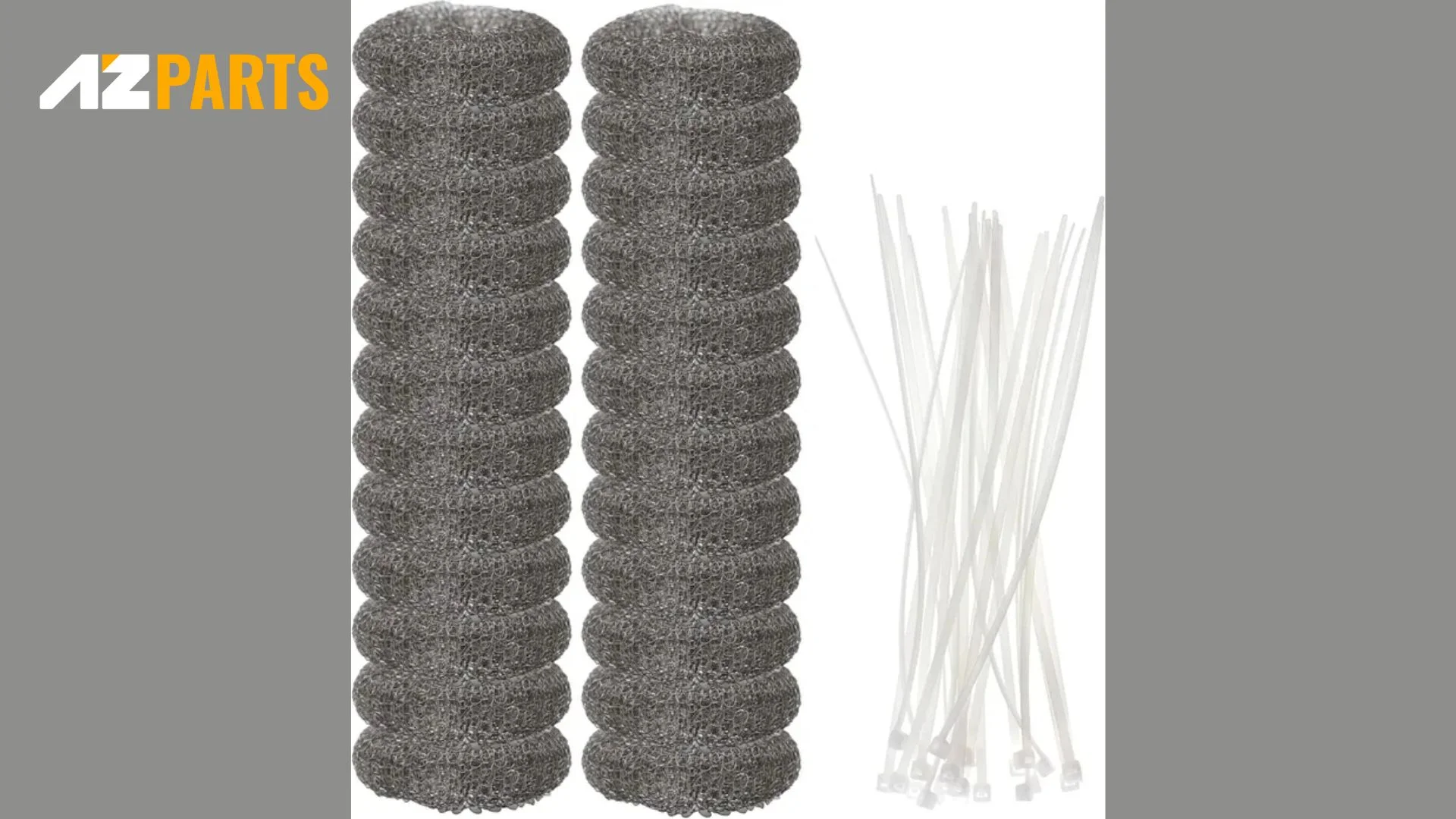
Washing machine lint traps (Source: AZParts)
Inspect the lint trap housing for damage or excessive wear that could allow debris to bypass the trap. Look for cracks, tears, or deformation that could affect the trap's effectiveness. For optimal performance and noise reduction, AZParts offers high-quality washing machine lint traps designed to effectively capture debris while maintaining proper water flow.
2.3. Check Under the Seal
The door seal in front-loading machines can harbor debris and cause noise issues if not properly maintained. Carefully inspect the seal for foreign objects, lint, or buildup in the folds and crevices. Remove any visible debris using a soft cloth, paying attention to the bottom section where items collect.
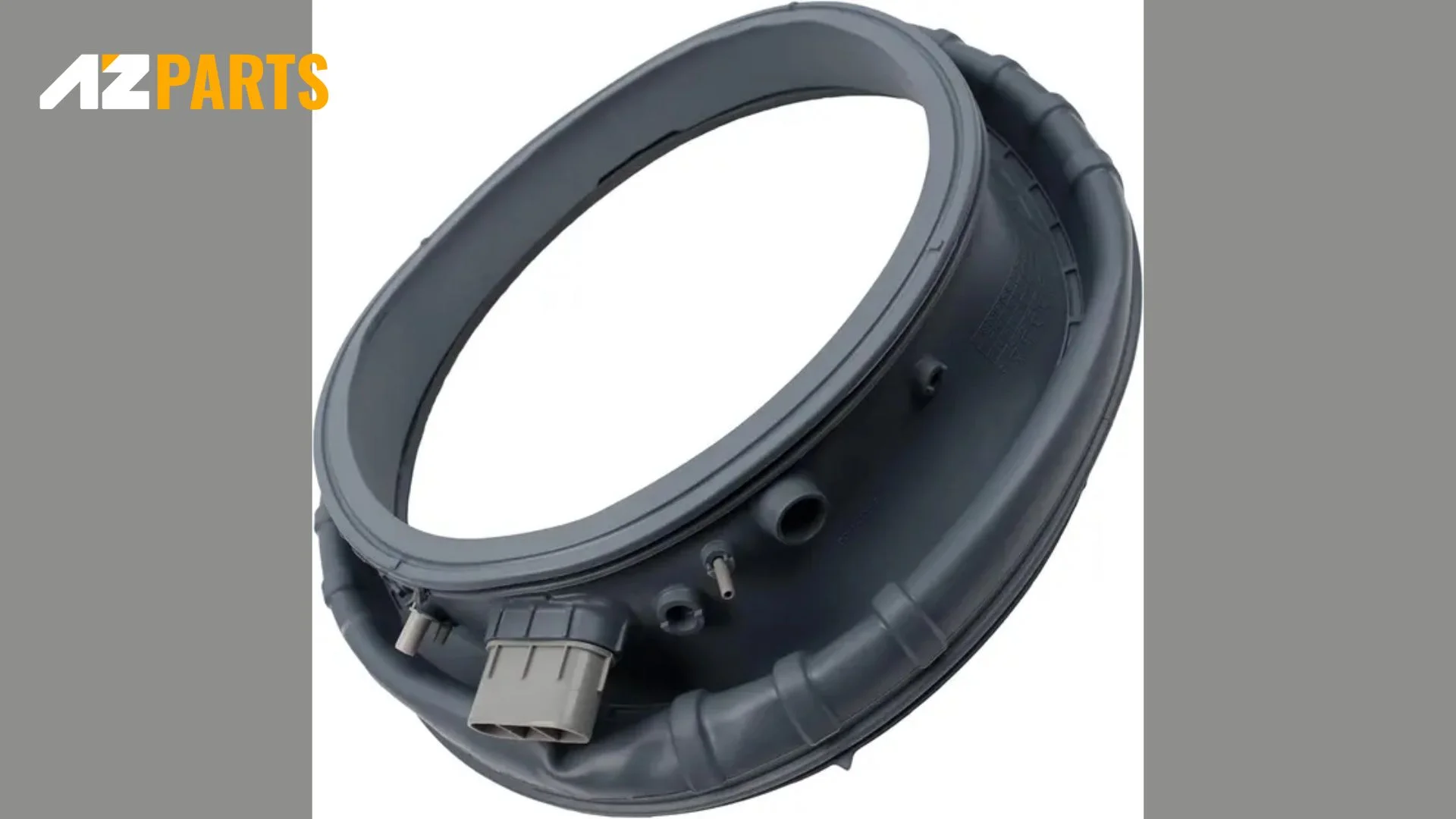
Check under the seal (Source: AZParts)
Check for seal damage such as tears, cracks, or excessive wear that could allow water leakage or create noise during operation. If your washing machine's door seal shows significant wear or damage, replacement may be necessary. AZParts provides high-quality washing machine seals designed to fit perfectly and provide reliable sealing performance.
2.4. Adjust the Water Pressure
Incorrect water pressure can contribute to noise problems. High water pressure can cause the inlet valve to operate roughly, creating banging sounds when it closes. Low water pressure can cause the machine to struggle during fill cycles, creating unusual noises as components work harder.
Check your home's water pressure using a pressure gauge. Optimal water pressure for most washing machines falls between 20 and 80 PSI. Inspect water supply hoses for kinks, restrictions, or damage that could affect water flow and pressure.
2.5. Replace the Water Inlet Valve
The water inlet valve controls water flow into your washing machine and can become a noise source when failing. Common symptoms include loud banging when the valve closes, continuous humming or buzzing noises, and irregular water flow patterns. These issues can worsen over time and may lead to complete valve failure.
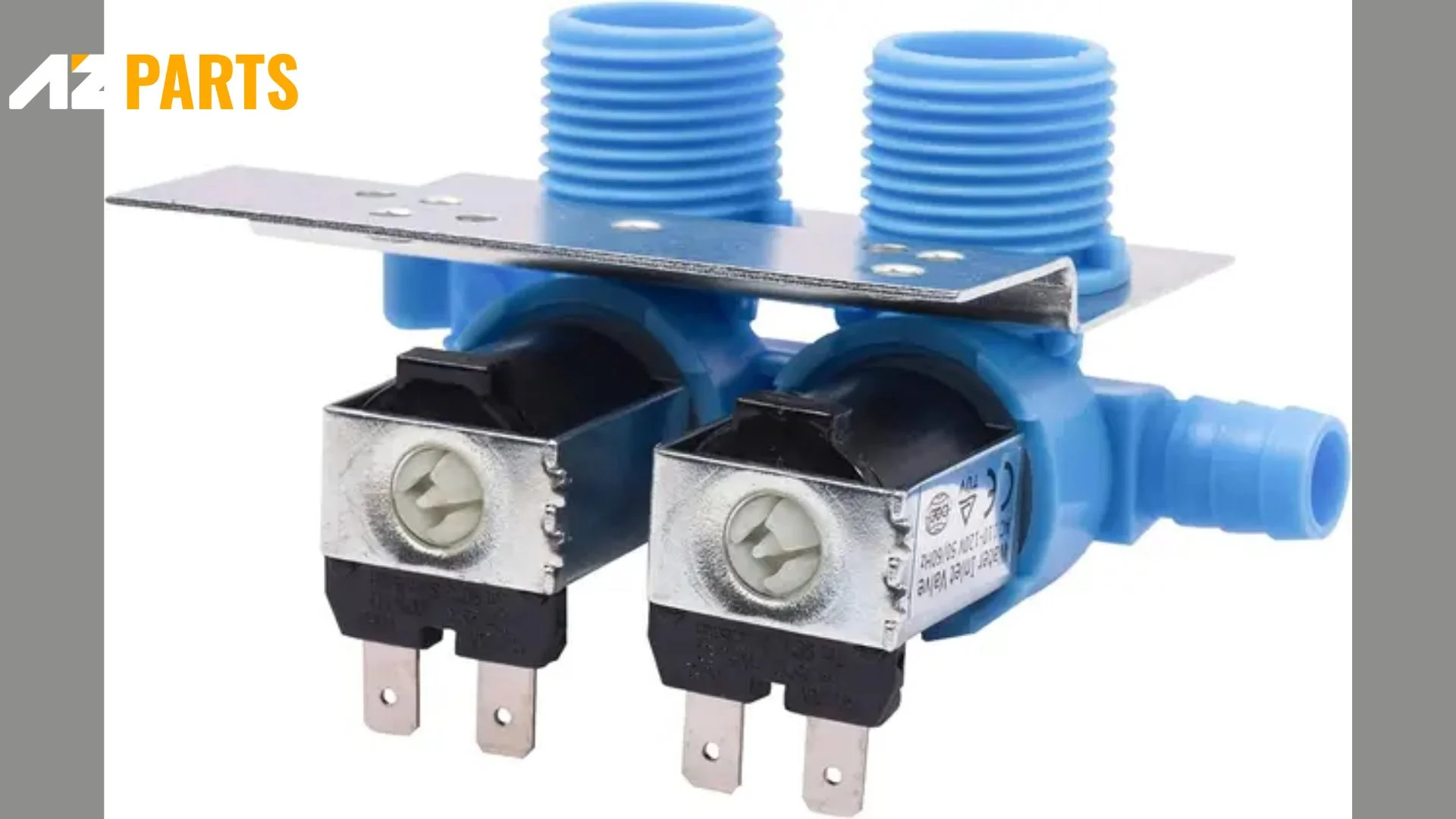
Replace the water inlet valve (Source: AZParts)
Before replacing the inlet valve, check water supply connections and ensure shut-off valves are fully open. Clean the inlet valve screens, which can become clogged with sediment and debris. When selecting a replacement, AZParts offers reliable washer water inlet valves designed to provide smooth, quiet operation while maintaining proper water flow control.
2.6. Call a Professional HVAC
While many noise issues can be resolved through basic maintenance and part replacement, some problems require professional diagnosis and repair. If you've tried the troubleshooting steps above and your washing machine continues making loud noises, contact a qualified appliance repair technician.
Certain noise issues, particularly those involving electrical components, motor problems, or transmission failures, require specialized knowledge and equipment to repair safely. Professional technicians have the experience, tools, and knowledge necessary to diagnose complex problems and perform safe, effective repairs.
Conclusion
Addressing washing machine noise promptly prevents costly repairs and maintains performance. Use our troubleshooting guide to identify and resolve common problems yourself. Regular maintenance like cleaning lint traps prevents many noise issues.
When replacement parts are needed, choose high-quality washer parts from AZParts for reliable repairs. Our comprehensive selection keeps your appliance running quietly and efficiently.
Don't let a noisy washing machine disrupt your routine or cause serious problems. Take action today to identify the noise source and contact AZParts for all your repair needs. With proper parts and maintenance, you can restore quiet operation and extend your washer's lifespan.
Contact Information:
8 The Green, Ste A, Dover, Delaware 19901-3618, United States
Discover other potential faults or errors that may occur with the washer:
Washer
Further Reading
Further Reading

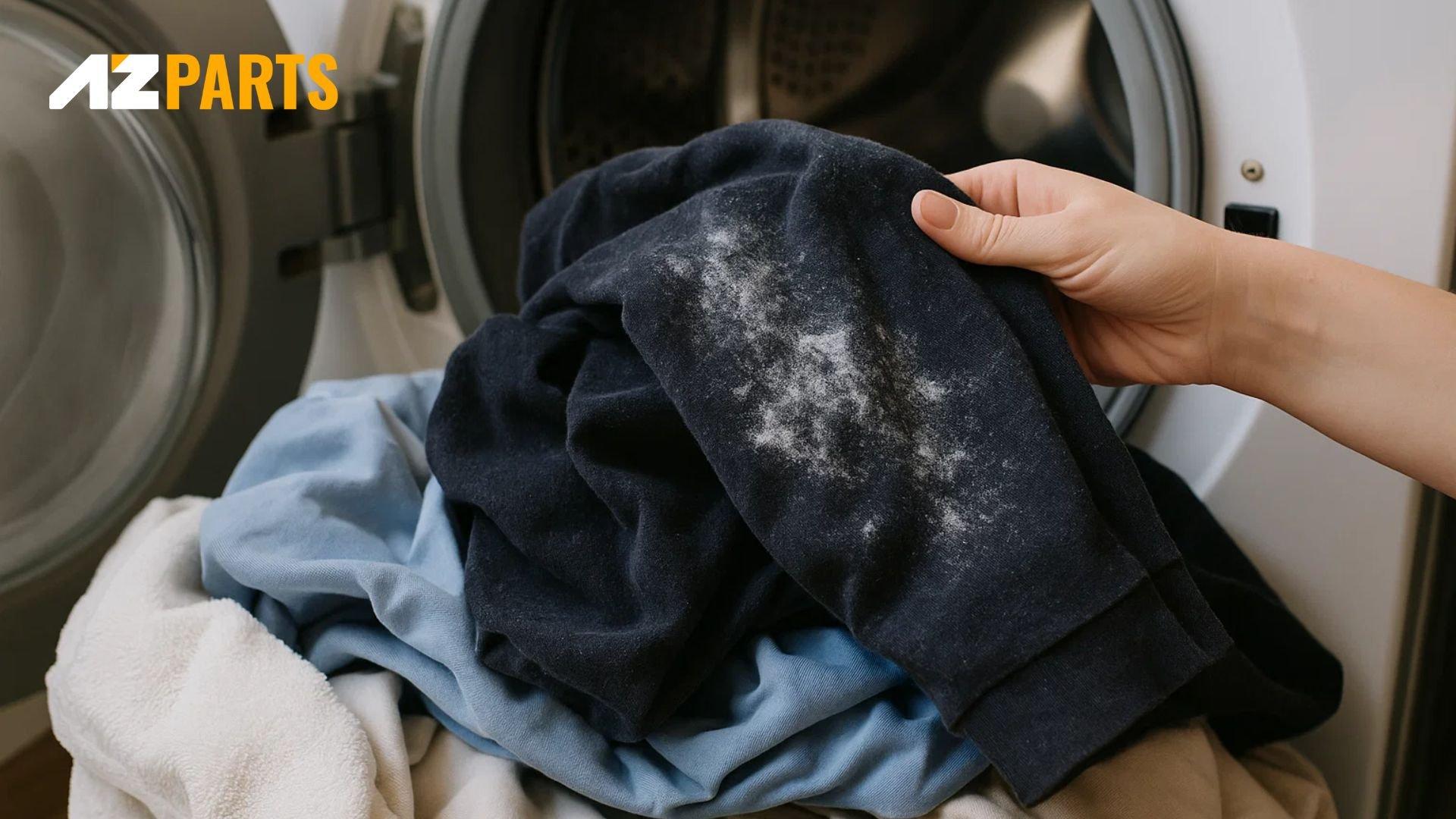



_1748341252.jpg&w=3840&q=75)